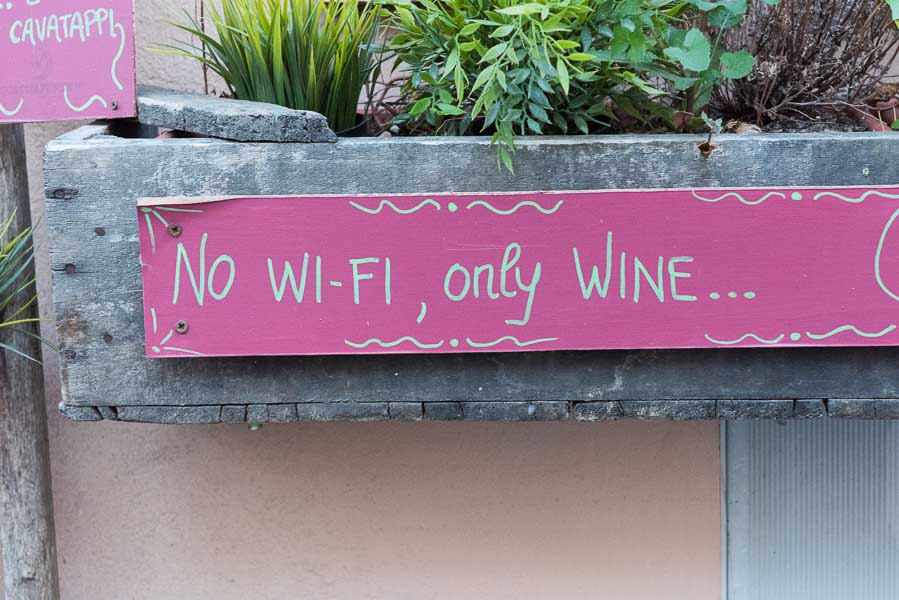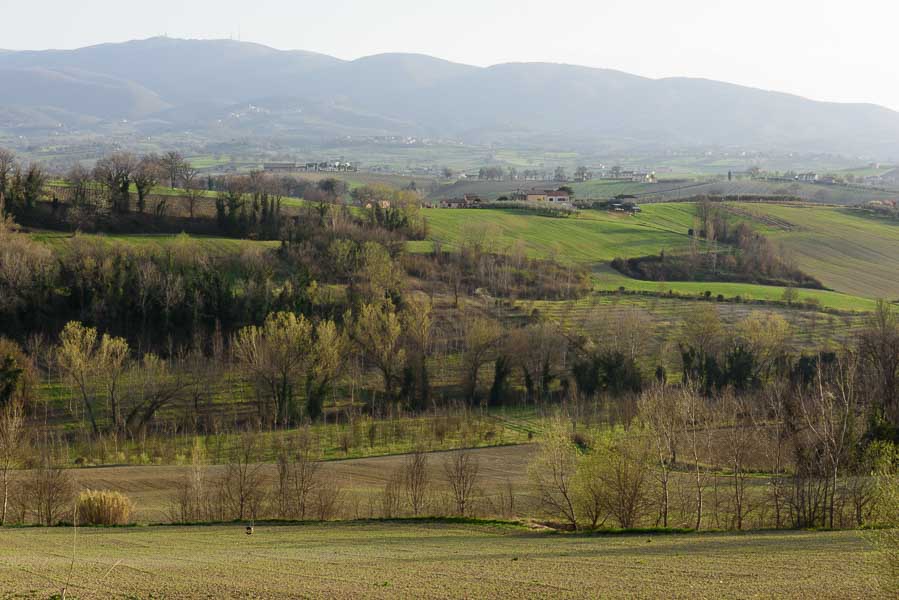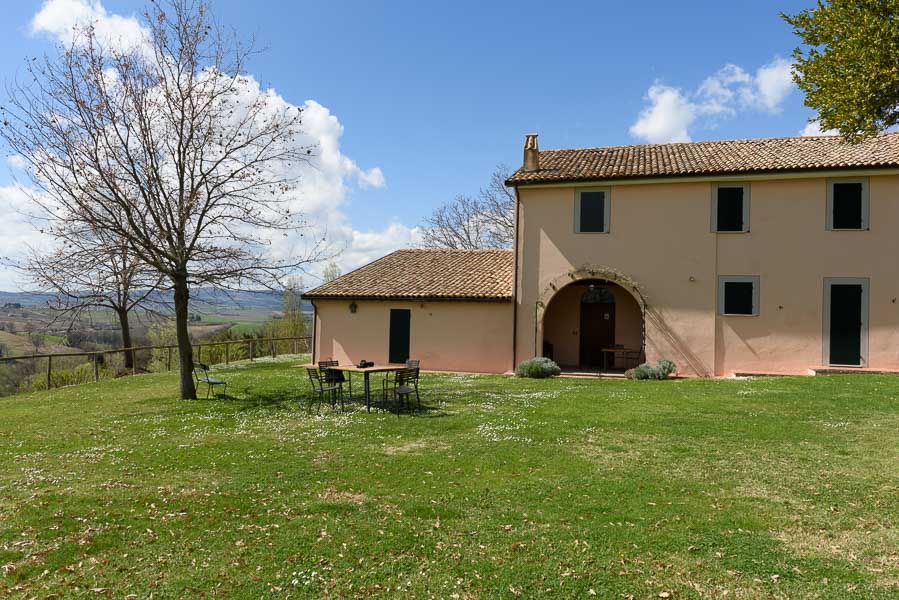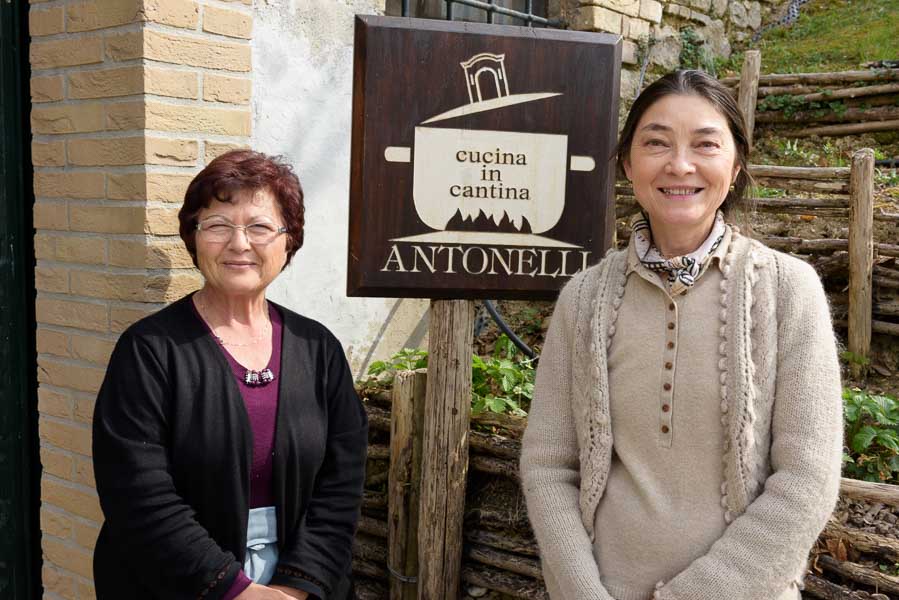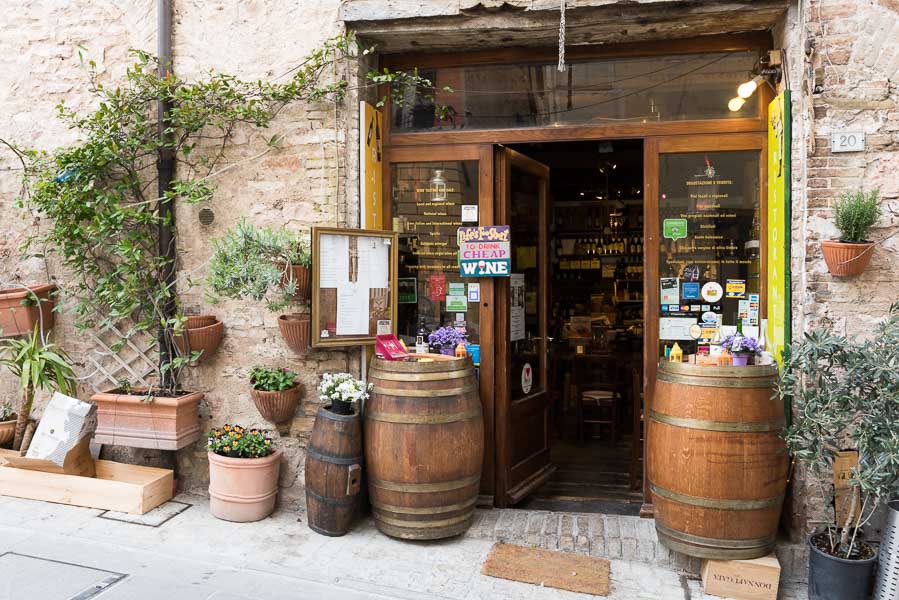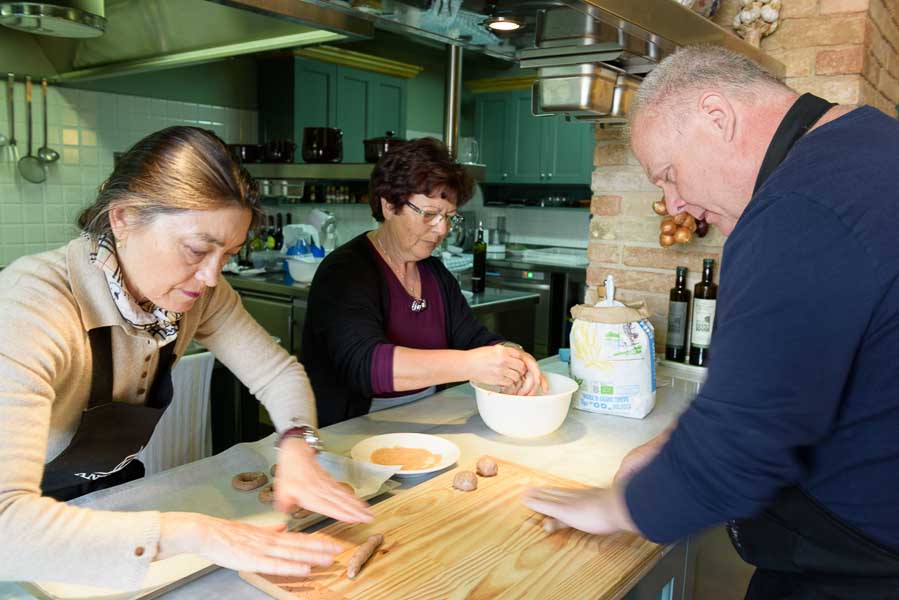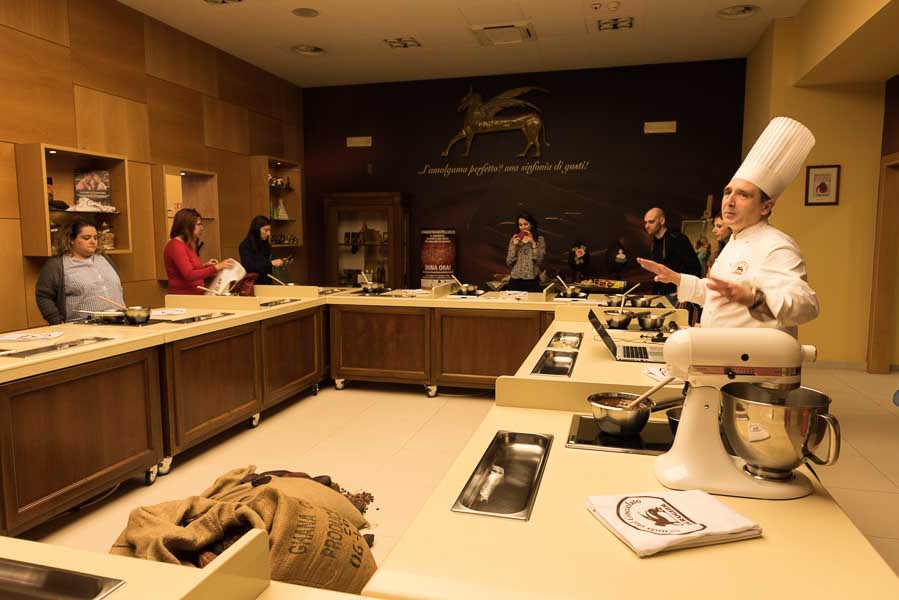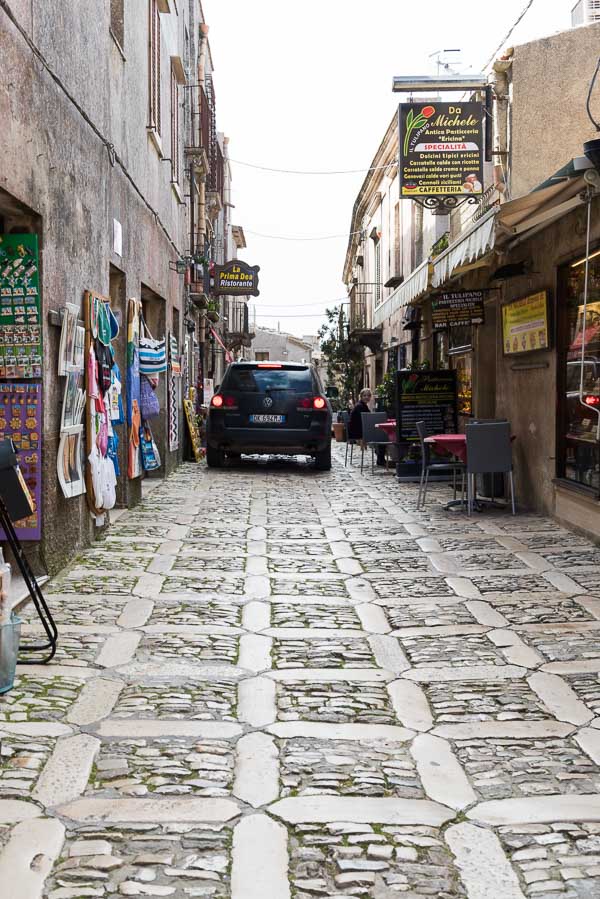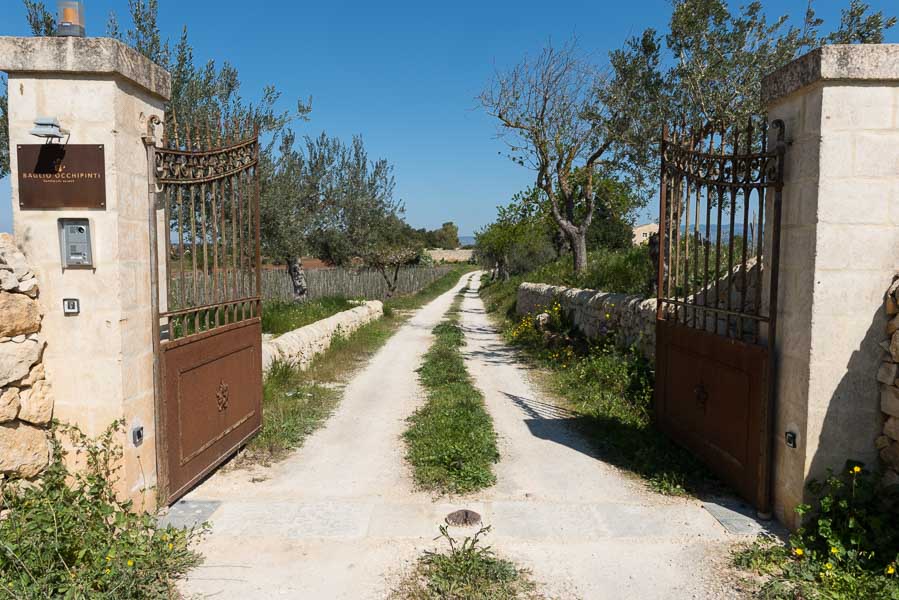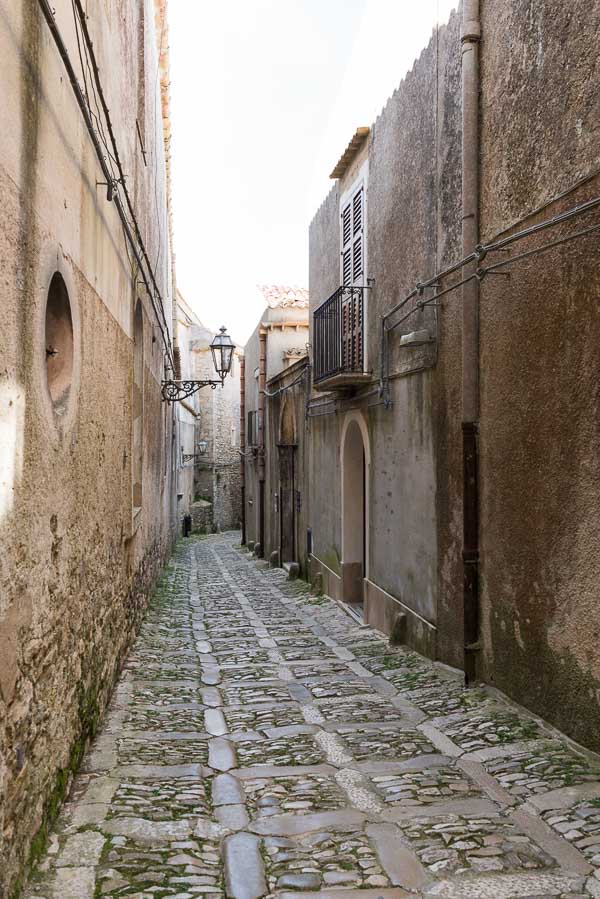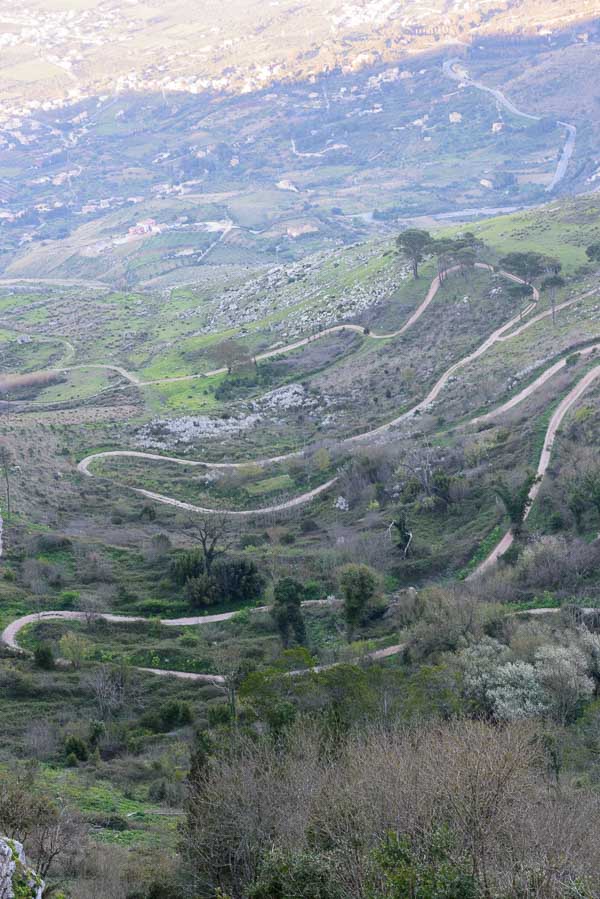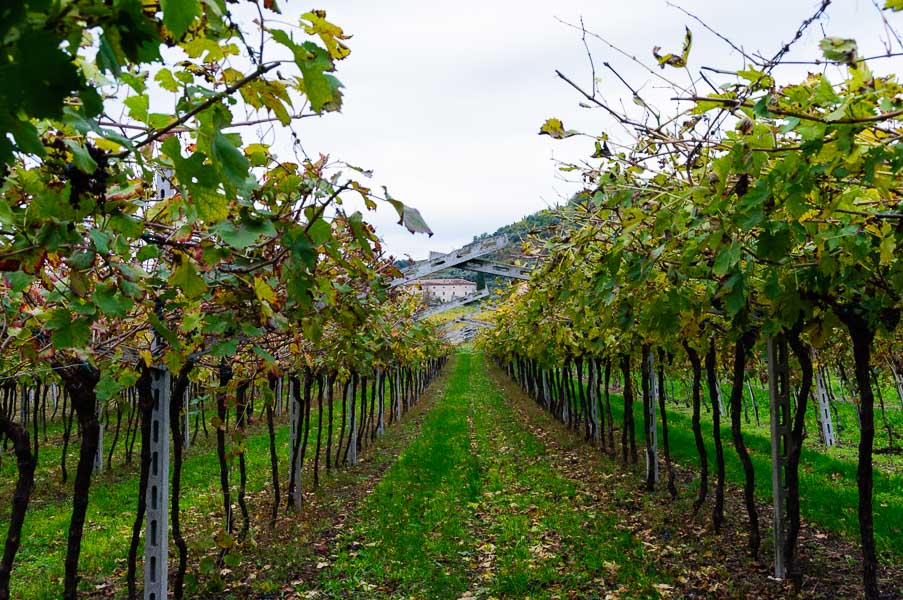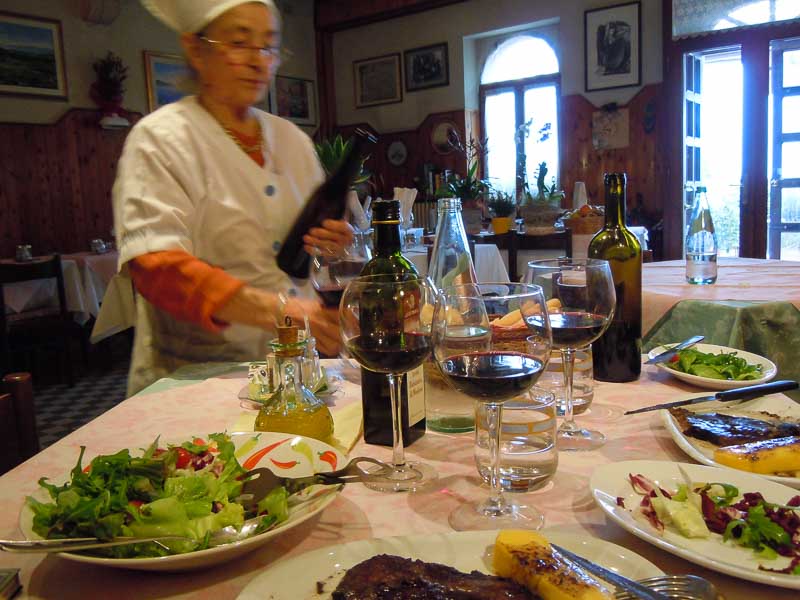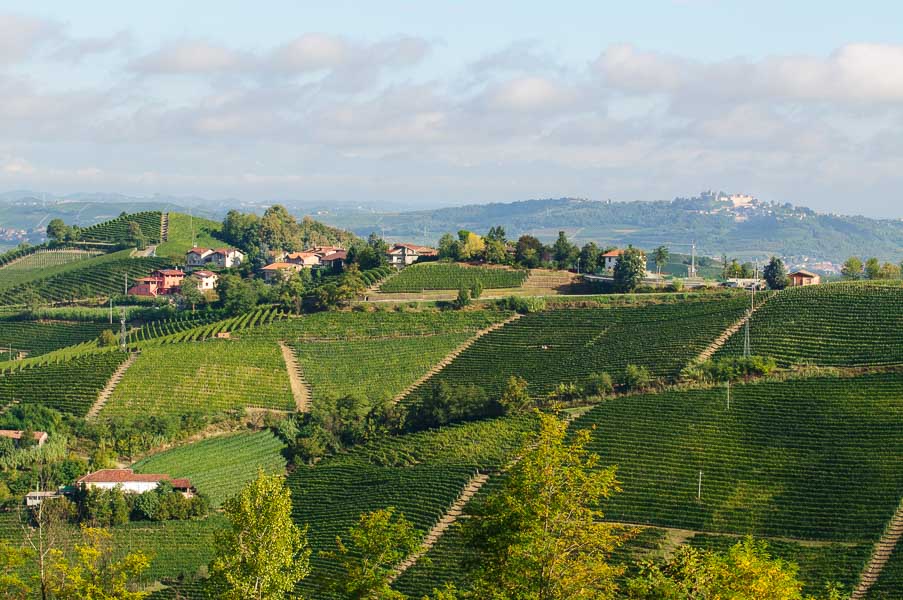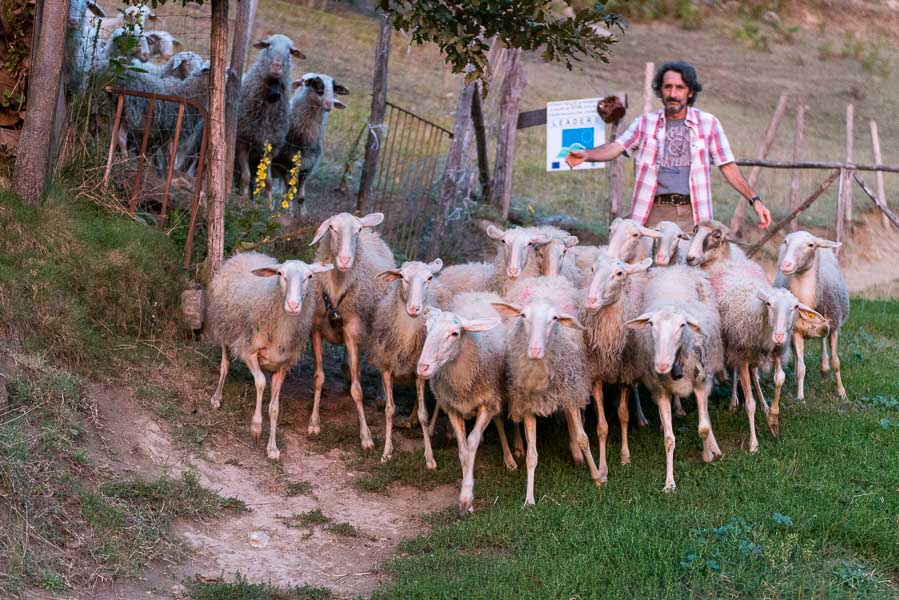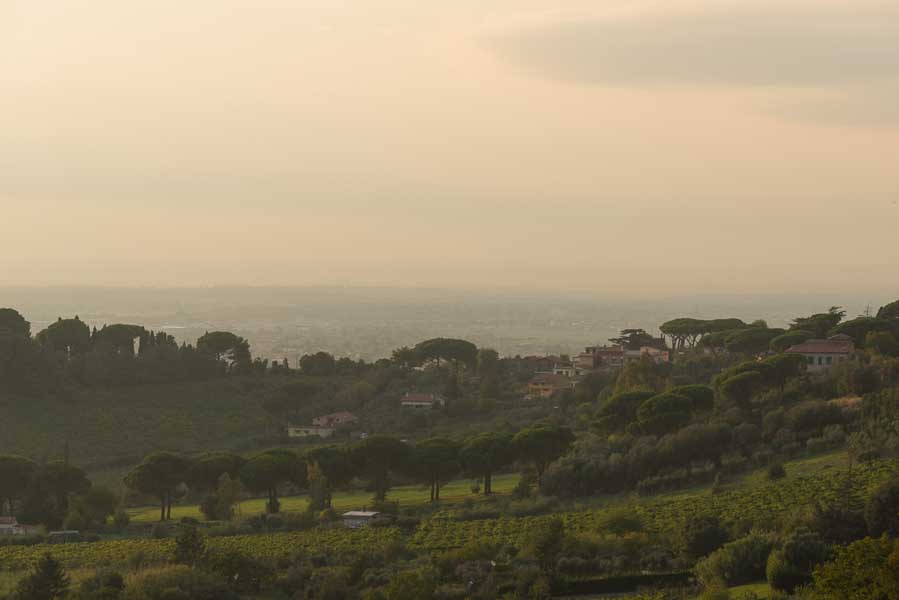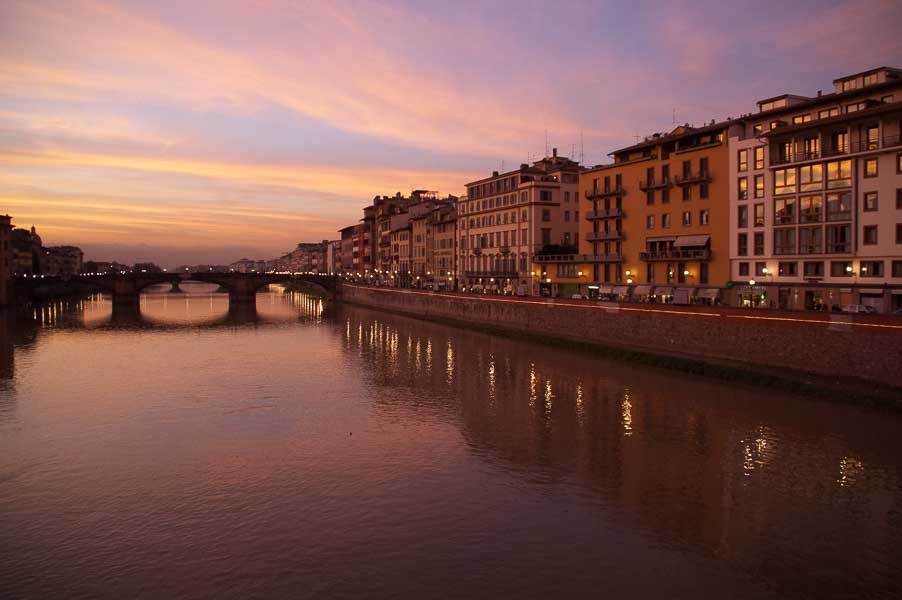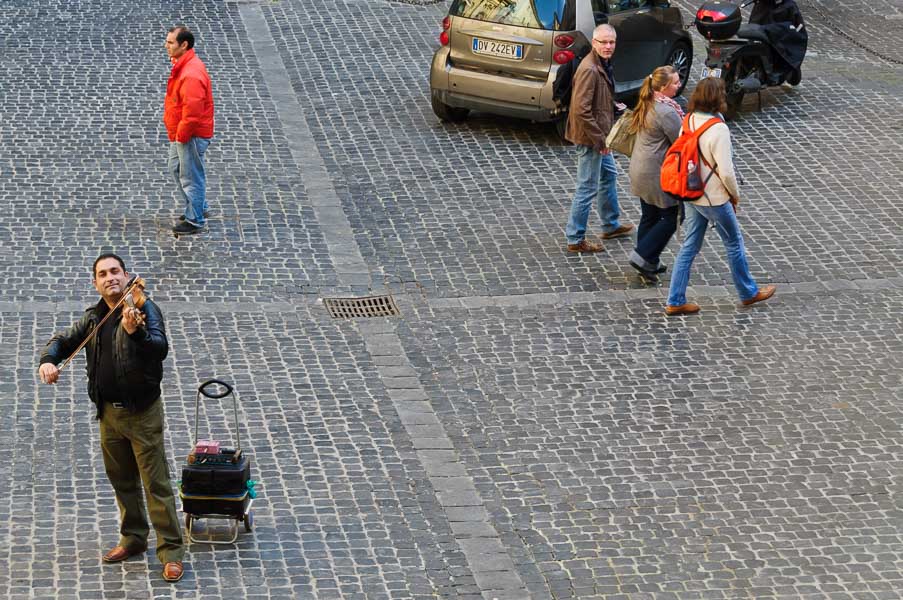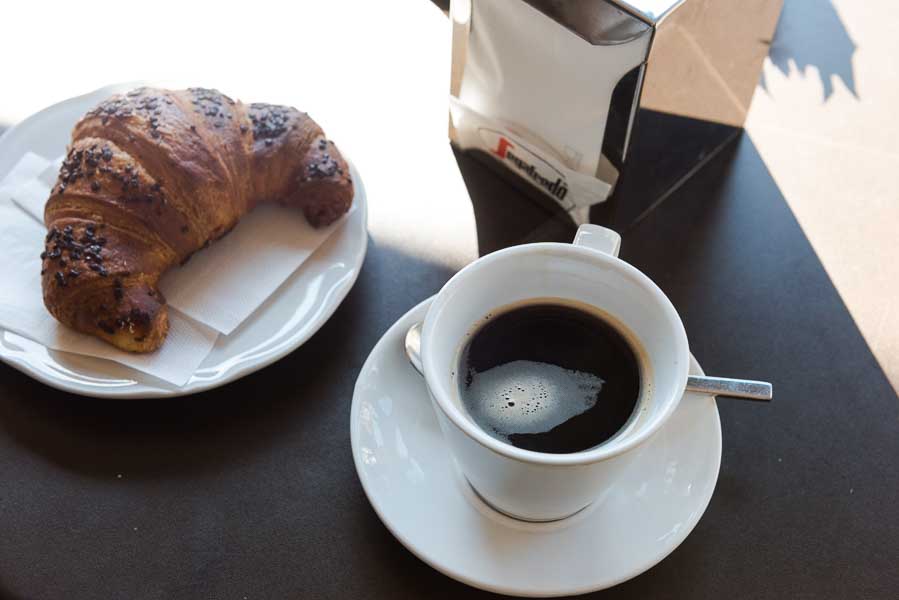On every package of their artisanal pasta, the Martelli family invites visitors to tour their small factory in Lari, Italy. In this medieval village 19 miles southeast of Pisa, the family has made pasta with passion and tradition since 1926.
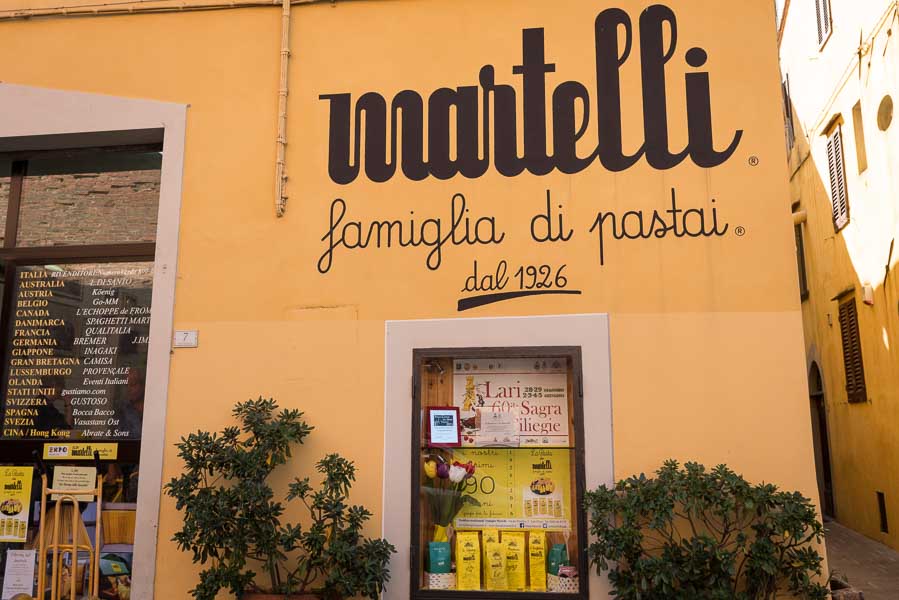
My husband Matt and I accepted the invitation and drove the bucolic roads in the Pisan hills to Lari where the 11th century Castello dei Vicari dominated the town center. Across the narrow stone street from the castle, the three-story tall yellow Martelli building was impossible to miss.
We had made an appointment with third-generation Luca Martelli. When we arrived he was operating the pasta cutter in the foyer. In his forties, he wore glasses, yellow overalls, and a baseball cap that gave him a youthful appearance. Long spaghetti noodles draped over rods advanced on a conveyor belt, were cut in half, and expelled from the machine. Luca expertly guided the freshly-cut noodles into an old wooden box.
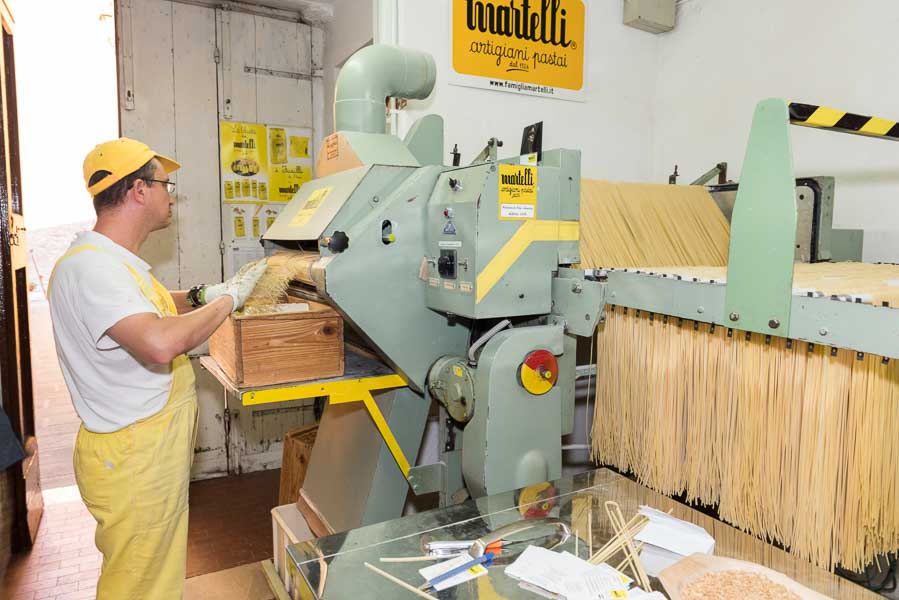
“Ciao, Benvenuti!” Luca greeted us. He turned the machine off and held up a spaghetti strand to show us a slight bend at the end, similar to a shepherd’s crook, from where the noodle had dried over the rod. “That’s how you can tell if pasta is handcrafted,” he said. “If it has a bend, someone put it through a cutter. Spaghetti that is straight and all the same length is mass-produced.”
Luca handed me the pasta strand. “Here,” he said, “you can feel it.” The noodle felt coarse, almost like sandpaper. “That texture is what makes our pasta so special,” he said.
Next he hefted a circular bronze die through which the pasta is slowly extruded. “This makes the pasta rough and increases the porosity. It holds sauce much better.” To save time and increase production, industrial pasta makers use teflon or brass, which renders noodles smooth so that sauces slide off. “That is one thing we do differently,” Luca said.
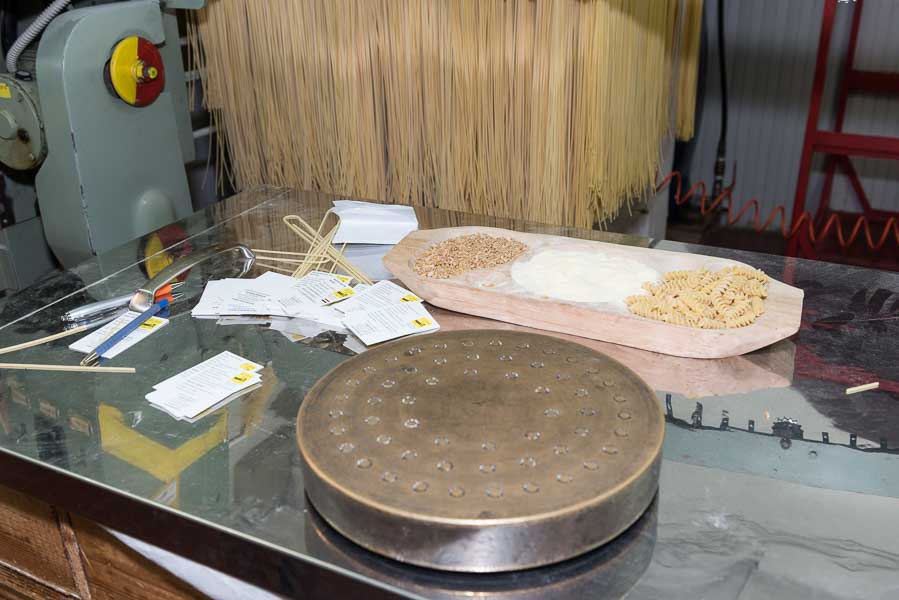
He led us down a few stairs and through a door to the two-story pasta making room. The heat and humidity blasted us. “Ciao! Benvenuti!” An older man, dressed in a yellow jumpsuit, grinned and approached us. Luca introduced us to his father, Dino, who took us to the far end of the room towards the extruder. It was Tuesday, spaghetti day.
Spaghetti noodles descended from the extruder above our heads to below our feet, looking like a twenty-foot long blonde wig. The attached pasta machine cut the long noodles and hung them over rods that moved forward on a conveyor through the pre-dryer. After the pasta was pre-dried, Dino lifted and placed the rods in three rows on a trolley.
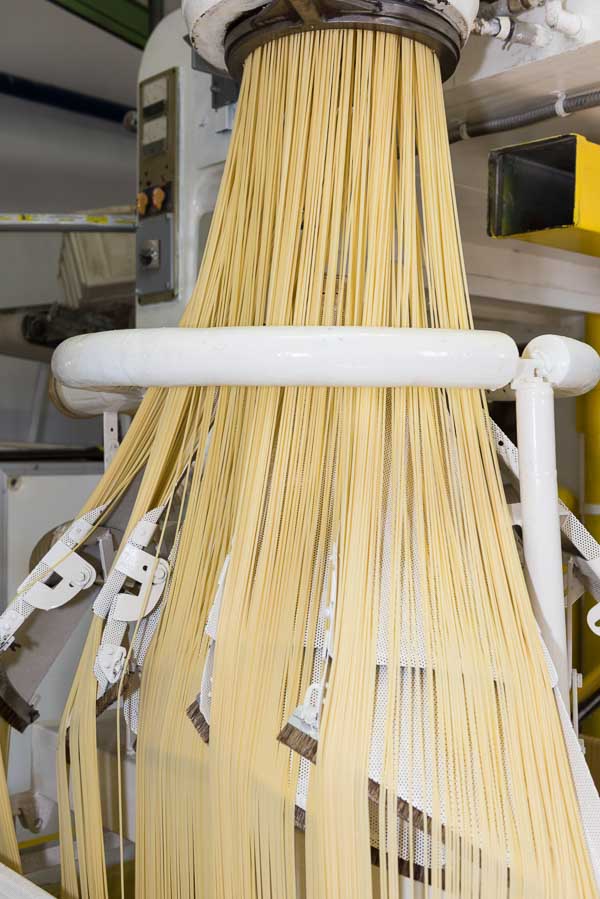
“There are only two ingredients in our pasta,” Luca said. “Italian hard durum wheat semolina and local water. A nearby mill grinds our specially sourced grain to our specifications. Here, we knead the wheat slowly with cold water to Dino’s instructions.”
“Our philosophy,” Dino told us, “is to produce high quality pasta in low quantities.” Only family members work every aspect of production, keeping it small. “We make in one year what Barilla manufactures in three hours,” Luca added.
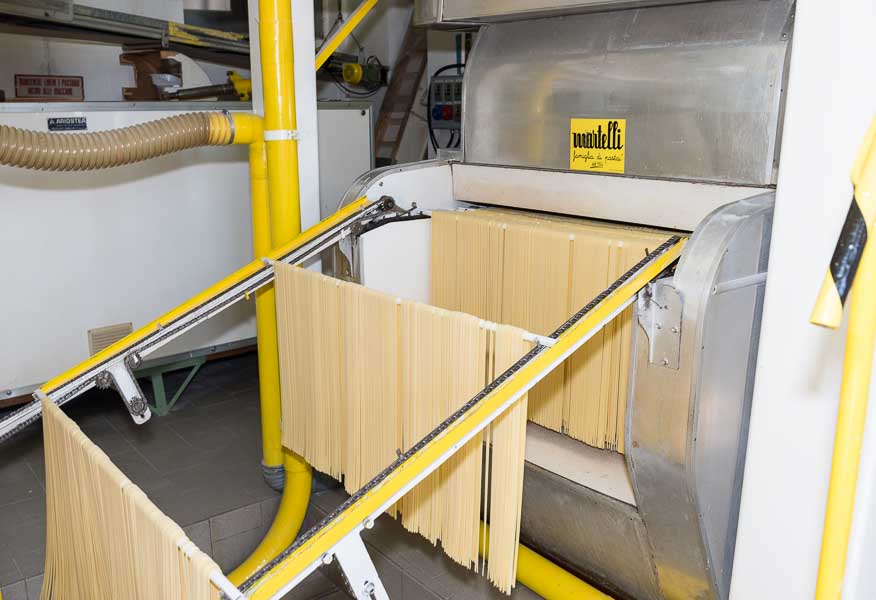
For 87 years, the Martellis made only four pasta shapes: Spaghetti; Spaghettini; Luca’s favorite, Maccheroni di Toscana; and le Penne Classiche. Martelli Pasta is the only factory that creates penne without ridges. Their noodles do not need the texture provided by the “rigate” to hold sauces. In 2013, they added Fusilli di Pisa. The spiral, resembling the leaning tower, celebrates the tradition of pasta making in the area.
Luca wheeled a trolley of pre-dried spaghetti into an elevator and pushed the up button. The three of us climbed up the stairs to meet it. When we reached the second floor, the humidity stifled us even more than in the production room. Luca brought the trolley to a hallway lined with drying rooms. He opened a door, turned off a large fan in the drying room so he could push the trolley in to dry.
“Drying pasta slowly at low temperatures is another thing we do differently,” Luca said. “We dry our pasta at 91-95º Fahrenheit for 50 hours, depending on the weather.” In contrast, industrial pasta dries in ovens for about five hours at 212º Fahrenheit. Slow drying at low temperatures enriches the grain flavor, improves digestibility, and enhances the pasta’s texture so it’s harder to overcook.
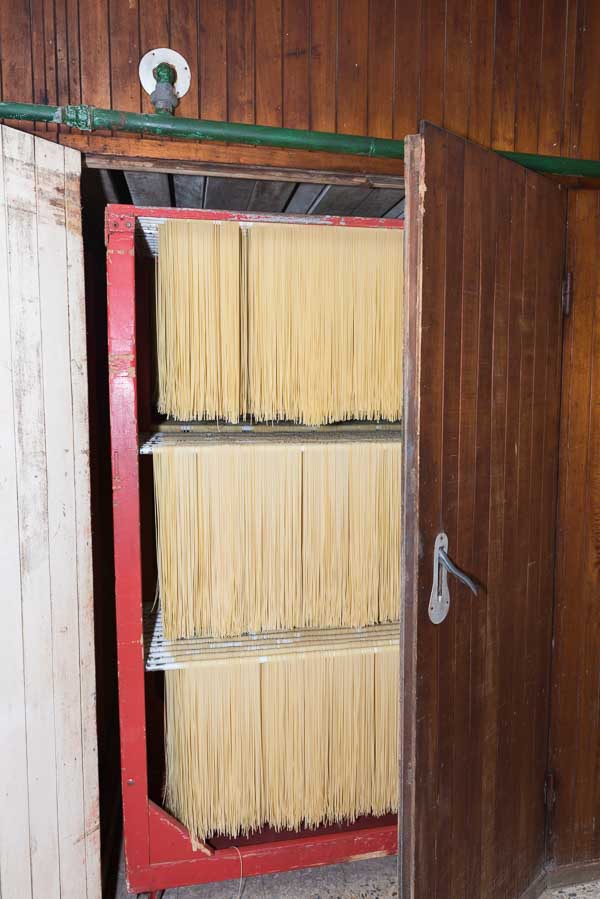
He turned the fan back on, checked the temperature and humidity of the dryers, and showed us the date stamp on a drying room door was 1969. “Our pasta machine is from Eisenhower’s era,” Luca said. “The elevator cable is from an American truck from World War Two. We maintain our equipment every August when the factory closes for two weeks.”
Luca took us downstairs, through the pasta cutting area, and across an alley to the packaging building. Shelves filled with pasta reached the ceiling. Mario, Laura, Lorenzo, Chiara, and Giacomo, all dressed in yellow shirts, hand-weighed, packaged, and boxed spaghetti in Martelli’s distinctive yellow paper packets. “Yellow is the traditional color of this area,” Luca explained. “Blue boxes were common elsewhere but in this region, pasta was always wrapped in yellow paper. We carry on that tradition.”
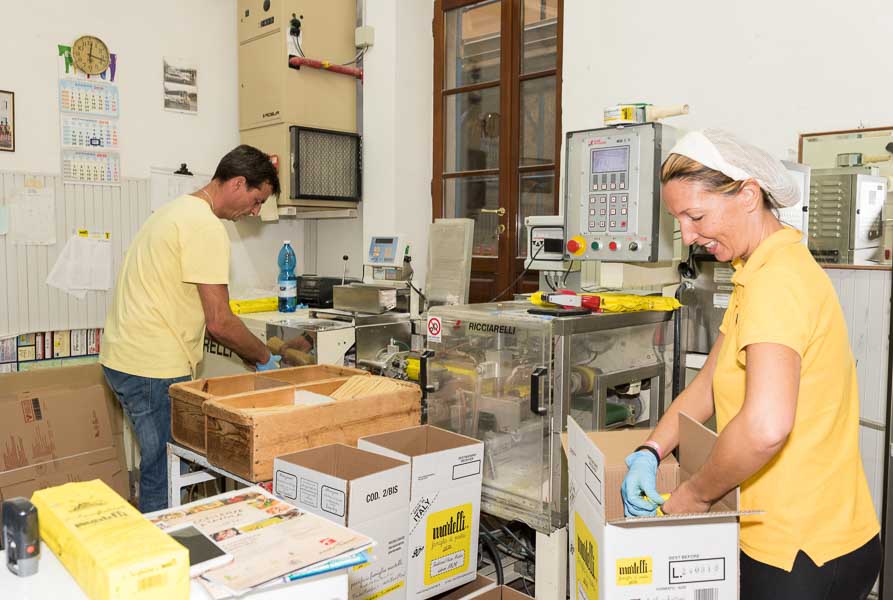
The Martellis don’t sell their pasta directly to the public. A list of worldwide importers is displayed on the door of the packaging building, and a shop in Lari around the corner from the Martelli buildings carries their pastas. They export as far away as Hong Kong, South Africa, and the United States. Award stickers adhered to the window illustrate the demand and honor for Martelli pasta.
“Can you join us for lunch?” Luca asked. “We’d be honored,” I said. He brought us to the yellow Martelli family home across the alley. Luca’s mother Lucia was preparing pork cutlets in the kitchen. Luca ushered us to the patio, just off the kitchen, overlooking their backyard and the Tuscan countryside.
Dino came outside and took us around the backyard to a door which led to a brick terrace. To our left was an old city gate. The Castello dei Vicari loomed on our right. The Martelli home was built along the fortified city wall. Dino demonstrated how defenders on the terrace would have shot at intruders.
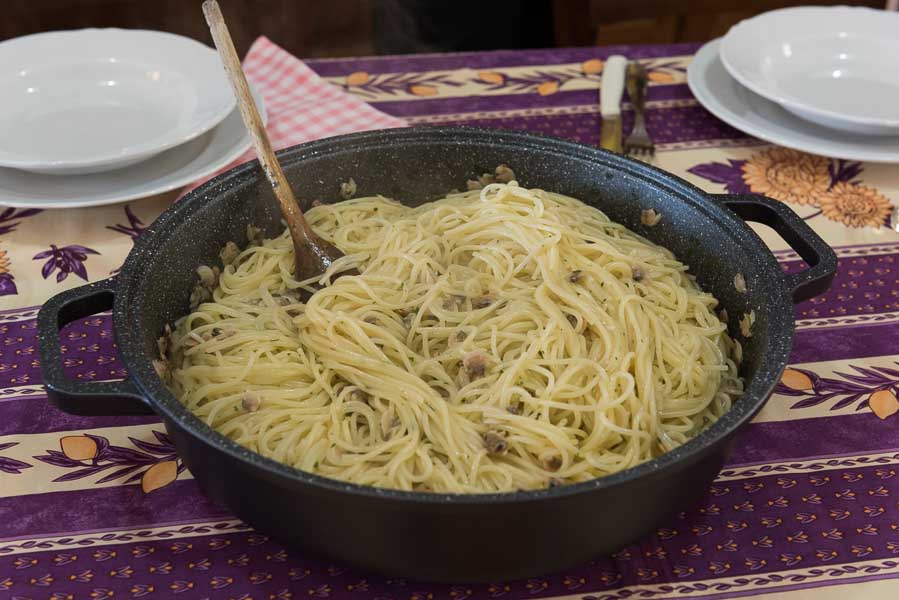
Dino brought us inside to the eat-in kitchen where a steaming pot of spaghettini sat on the big table. Chiara, Mario, Dino, Matt, and I sat and Lucia scooped generous portions of spaghettini into bowls. “Buon Appetito!” She said.
Lucia’s spaghettini tasted earthy and delicious with a firm texture. I asked how she made it.
“It’s just spaghettini with olive oil, thinly sliced clams, garlic, and a little parsley,” She said. For secondi she served the pork cutlets with lentils and a salad. Chiara gave us the Italian secret for staying trim.
“We eat pasta and a bigger meal at lunch and have a light dinner, always fresh food,” she said. “And of course, we work all day.”
After lunch, we bought eleven pounds of Martelli pasta to bring home. When that’s gone, I will order more on www.gustiamo.com. When my yellow bag arrives, I’ll know who packaged it and why it is so flavorful.
For More Information:
Martelli Pasta
Via dei Pastifici, 3
56035 Lari
www.martelli.info
Tel. +39 0587.68.42.38

